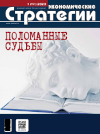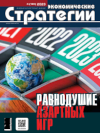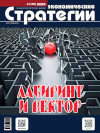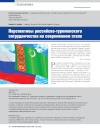Strategic Expert Community of “Ust-Kachka” – 2022
DOI: 10.33917/es-5.191.2023.22-27
The magazine “Economic Strategies” continues to publish materials from the strategic expert community “Ust-Kachka” (SES “Ust-Kachka”). Previously published [1–3]. The Ust-Kachka ES was organized by representatives of 4 different Soviet analytical schools in 2012, and operates in the format of a “new generation thought factory” (“brain trust”, “smart tank”). The main product of the “thought factory” “Ust-Kachka” is a strategic scenario forecast in the World-Country-Region format in the areas of “PEST (M)” (Politics, Economics, Social Sphere, Technology, Multitrend) — the so-called “matrix PEST”. In addition to the forecast — Strategic Design Decisions for translating negative scenarios into target ones, Concepts, industry and regional development strategies. The work of the Ust-Kachka SES is carried out according to its own, unique methodology, the format of which is closest to “war games”. Experts from leading Russian clubs — Izborsky, Sretensky, Valdai, Pitirim Sorokin and others — participate in the work of Ust-Kachki. Over the 11 years of operation, SES “Ust-Kachka” has reached the horizons of its forecasts and, according to the “forecast-fact” criterion, is one of the leading “thought factories” in Russia.
References:
1. Zolotarev D.Yu. O tsiklakh, kul’turnoi slozhnosti, tsifrovoi ekonomike i promyshlennoi revolyutsii [On Cycles, Cultural Complexity, Digital Economy and Industrial Revolution]. Ekonomicheskie strategii, 2018, vol. 20, no 6, pp. 94–99.
2. Strategicheskoe ekspertnoe soobshchestvo “Ust’-Kachka” — 2018 [Strategic Expert Community Ust-Kachka — 2018]. Ekonomicheskie strategii, 2018, vol. 20, no 7, pp. 46–73.
3. Zolotarev D.Yu. Razvitie permskogo territorial’nogo innovatsionnogo i promyshlennogo klastera “Fotonika”. Nekotorye rezul’taty strategicheskoi sessii [Developing the Perm Territorial Innovation and Industrial Cluster “Photonics”]. Ekonomicheskie strategii, 2020, vol. 22, no 1, pp. 18–23, DOI: 10.33917/es-1.167.2020.18-23.















